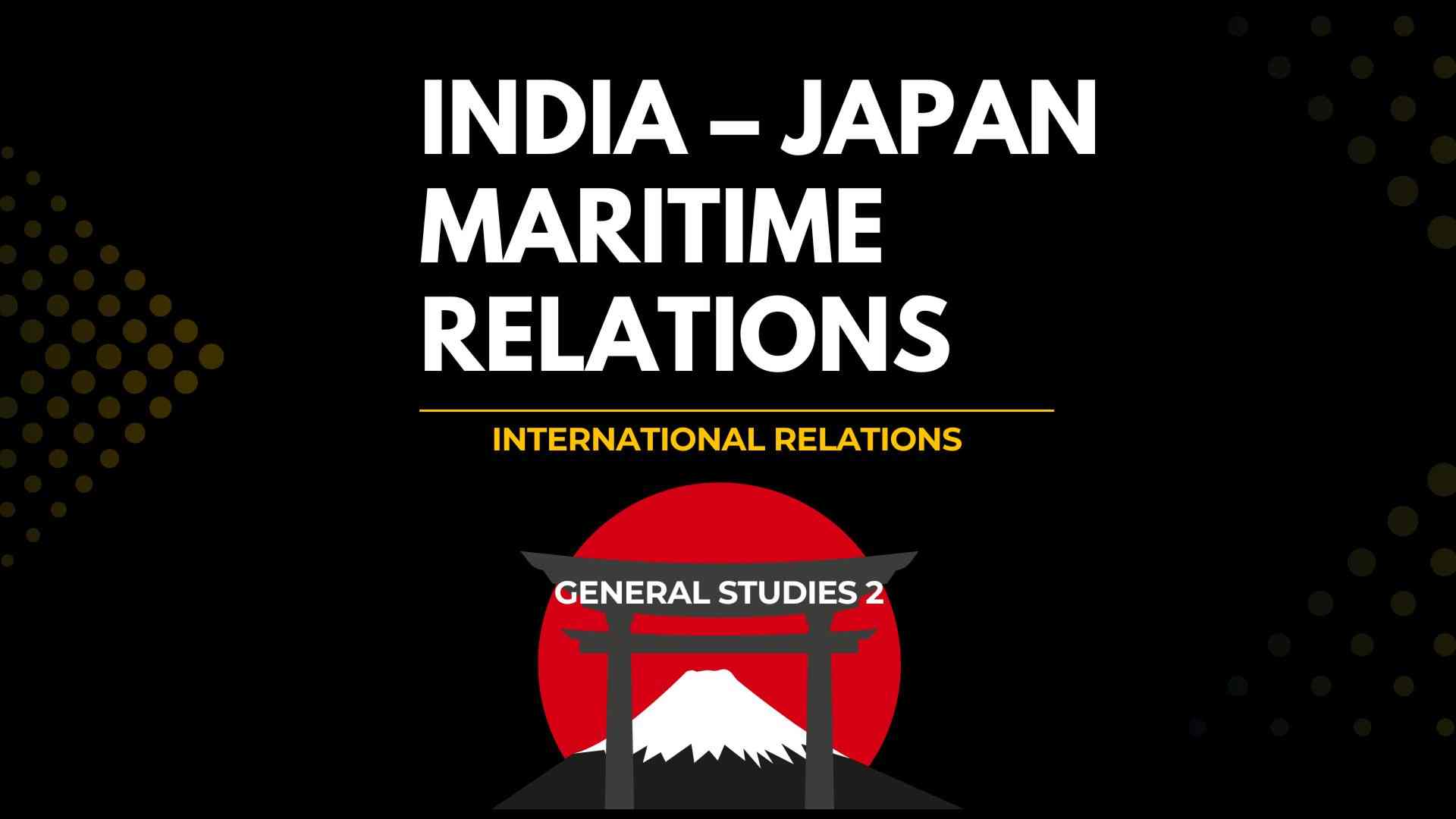☰ More GS 2 Topics
×
Indian Constitution
Union and the States
Separation of Powers
Comparison of the Indian Constitution
Parliament and State Legislatures
Executive and the Judiciary
Representation of People’s Act
Constitutional and other Bodies
Government Policies and schemes
Social Sector
Governance
Role of Civil Services
International Affairs
Topics for International Affairs
Syllabus for International Affairs
- India and its Neighborhood Relations
- Bilateral, Regional and Global Groupings and Agreements
- Effect of Policies and Politics of Developed and Developing Countries on India’s interests, Indian Diaspora
- Important International Institutions, agencies
India-Japan Maritime Relation – Important UPSC Notes
India and Japan have intensified bilateral maritime collaboration (India-Japan Maritime Relation) focusing on port infrastructure, digitisation, green shipping, skilled manpower, and strategic Indo-Pacific interests.
Read More »


